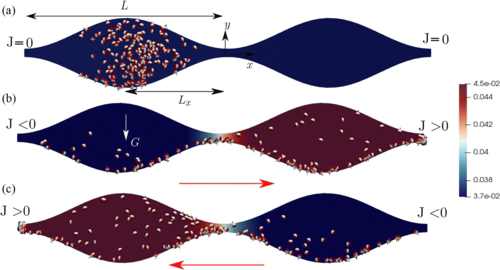<< When molecules or bacteria organize into a long-range pattern, researchers want to understand how the microscopic interactions lead to the macroscopic order. (AA) observed such self-organization in magnetic particles suspended in a liquid and subjected to an oscillating magnetic field. Through experiments and simulations, the team showed that the resulting zigzag pattern is explained by the fluid flow generated around the oscillating particles, not by any details of the particles or the applied field. Similar zigzag patterns have also been seen in charged colloids subjected to oscillating electric fields, so the explanation may cover a range of particle systems. The researchers also believe that understanding and controlling the effect could lead to useful applications in microfluidics devices. >>️
David Ehrenstein. Self-Organized Zigzags from Fluid Flow. Physics 16, 138. Aug 11, 2023.
Gaspard Junot, Marco De Corato, Pietro Tierno. Large Scale Zigzag Pattern Emerging from Circulating Active Shakers. Phys. Rev. Lett. 131, 068301. Aug 11, 2023.
Also: particle, self-assembly, chiral, behav, in: https://www.inkgmr.net/kwrds.html
Keywords: gst, behavior, particle, self-assembly, self-organization, chiral, active shakers, squirmers, alternating chirality






